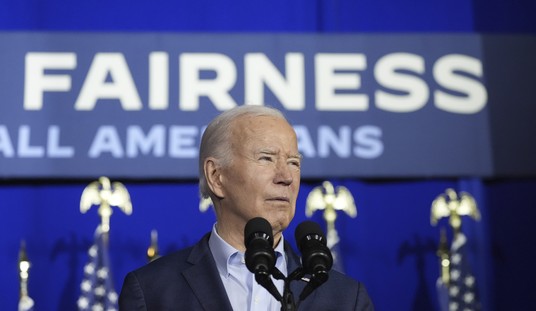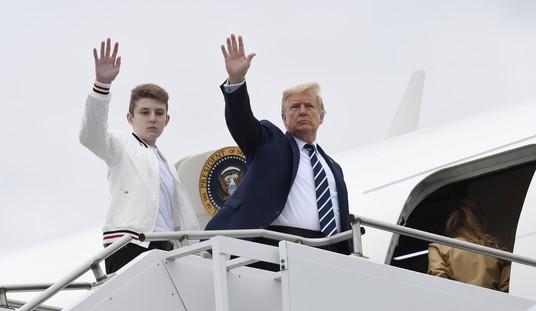According to an article in the Washington Times on March 16th, Representative Ted Poe (R-TX) has proposed new House rules to hold country-by-country votes on foreign assistance,
saying it would end the current system where overall foreign aid levels are decided essentially in one fell swoop. He said splitting each country’s funding into its own bill will make members of Congress think more carefully about which countries deserve money, while adding transparency and accountability to the process.
“It changes House rules so members are able to vote on each country one at a time,” he said during a House Foreign Affairs Committee hearing that explored U.S. foreign assistance. “For every dollar handed out, we can ask, ‘How does this further the interest of the United States? If a country can justify that it is critical to U.S. interests, then it will pass. If not, then it won’t.”
I had suggested something similar in a Pajamas article published on March 14th, titled What’s Foreign Aid? Why Does the U.S. Provide It? and think that Rep. Poe has made an appropriate suggestion. The Washington Times article linked above observes that
Democrats have fought back, saying foreign-aid spending saves money over the long haul. On Wednesday, they pointed to testimony from Gen. David H. Petreaus, who told lawmakers that funding the State Department and the U.S. Agency for International Development (USAID) will be key to the successful transition from combat to civilian forces after troops begin to leave Afghanistan, as is scheduled later this year.
“This category is really a national security funding issue, not just an issue of foreign assistance or some other element,” Gen. Petreaus told the House Armed Services Committee on Wednesday.
Some “foreign-aid” funding requests are contained in different budgets; Department of Defense and Department of State, for example, and there is a lack of anything approaching clarity and specificity. Let me offer a parable:
Suppose some friends and I were to approach you and say, “Please give me $10,000, give Charlie $5,000 and give Pete $8,000. Assuming that you had money to burn, the resulting exchange might be something like this:
You: Why?
Me: I want to do good things and so do they.
You: What sort?
Me: Help folks in foreign countries and promote the national security.
You: Where?
Me: All over; lots of places not in the United States.
You: To do precisely what?
Me: We’d have to think about that, but we can’t anticipate every earthquake, hurricane, revolution and every other little problem. We’re experts and you should trust our competence and judgment.
You might well find these responses unsatisfactory, but that’s not too far removed from how foreign-aid appropriation requests are made, and they are not terribly different from appropriation requests in other realms.
The foreign aid appropriation request for fiscal 2011 – some of which has likely already been granted via continuing resolutions and much of that already spent – does provide a minimal level of specificity. For example, we can learn that $85 million has been requested for direct aid to Somalia, $20 million to Cuba, $5 million to Venezuela and $2.5 million to North Korea. Why? Who knows. We can look at an interactive world map, click on countries and determine how much is desired for each in direct foreign-aid; we can’t determine for what or how “what” is to be accomplished. We can also look at aid for all regions in the aggregate and at purposes under general categories: Here are the general categories:
Peace and Security $10,843,000,000
Health $9,386,600,000
Economic Development $4,656,400,000
Humanitarian Assistance $4,005,800,000
Democracy, Human Rights and Governance $3,333,000,000
Education and Social Services $1,585,700,000
Environment $815,300,000
We can even find some detail for these items. For example, Peace and Security encompasses
peacekeeping, humanitarian, coalition/multinational and peace support operation. Support security sector reform through training and operational support. A host nation’s security forces include military, paramilitary, law enforcement (includes civilian police, specialized units, border security, maritime security, etc.) Security sector reform activities are not limited to post-conflict situations.
“Peace and Security” does not include funds for direct military action by United States forces, much of which is presumably included in the Department of Defense appropriation request. I have found no reliable method to determine even approximately how much is proposed to be spent in total to help North Korea, Cuba, Venezuela or any other country, for what, why or how.
Were I an honorable member of Congress tasked with voting on whether to approve the annual foreign-aid appropriation request at the expense of navigable waterways improvements in Kansas (and if did not represent a district in Kansas) I would probably find it difficult to make a decision. And this assumes that lots of money were available to be spent; it is not.
On its face and to the extent ascertainable, the total of the various foreign-aid appropriation requests seems relatively small and innocuous; it may even amount to less than the $105 billion appropriated by the lamentably departed prior Congress for implementation of ObamaCare, some of it now being spent and some of which is for future years. However, regardless of the amount of money involved, it strikes me as very important that those asked to vote on foreign-aid appropriation requests be provided substantially more detail than at present on Where, Why, How and, of greatest importance, What’s in it for the United States. Mr. Poe’s proposed amendment to the House rules could probably be expanded a bit but is a good start; with what I like to think of as a “solid” Republican majority there, it should be possible.








Join the conversation as a VIP Member